Hey there! If you've ever found yourself in the position of having to respond to a resignation letter, you know it can be a bit tricky. It's important to strike the right balance between professionalism and a touch of warmth, as you want to maintain a good relationship with the departing colleague. In this article, we'll explore some effective templates and tips to help you craft a thoughtful response that acknowledges their decision while expressing your appreciation for their contributions. So, let's dive in and discover how to handle this situation gracefully!

Gratitude expression
A resignation letter response that expresses gratitude highlights appreciation for the opportunities and experiences gained during employment. Acknowledgment of supportive colleagues and management fosters goodwill. Reflection on specific projects or achievements contributes to a positive tone. Offering assistance during the transition period demonstrates professionalism and willingness to maintain strong relationships. A heartfelt closing statement emphasizes optimism for future endeavors and lasting connections cultivated during tenure.
Acknowledgment of resignation
Receiving a resignation notice initiates a formal acknowledgment process within an organization. The response generally includes a confirmation of the resignation date, recognition of the employee's contributions, and an outline of the next steps regarding transitions. For instance, if an employee named John Smith submitted his resignation effective on November 15, 2023, it is important to reflect on his role within the marketing department over the past five years, noting successful campaigns that increased brand visibility. Additionally, the response should detail a plan for transition, including meetings to discuss ongoing projects and knowledge transfer to ensure continuity following John's departure. An expression of gratitude for his efforts is crucial, perhaps highlighting awards or peer recognition received during employment.
Transition plan mention
A well-organized transition plan is crucial during an employee's resignation process to ensure a smooth handover of responsibilities. This includes outlining key tasks, deadlines, and necessary training for team members, particularly for projects in progress. Employees should detail their ongoing assignments, significant stakeholder contacts, and any critical documents that need attention. Providing access to shared drives and systems used in daily operations facilitates seamless transition for successors. Communication about the transition details should remain transparent with management and colleagues, ensuring no disruption in workflow. Involving a designated colleague to assist can further bolster this transition phase, helping to maintain productivity levels.
Positive well-wishes
A resignation letter response can convey positive well-wishes while maintaining professionalism. Expressing gratitude for the employee's contributions highlights appreciation. Wishing them success in future endeavors fosters goodwill and strengthens professional relationships. Including a personal anecdote or shared experience adds a heartfelt touch. Acknowledging their influence on team dynamics emphasizes the value they brought to the organization. Encouraging open lines of communication for future networking opportunities showcases supportive intentions. This approach not only reflects organizational culture but also leaves a lasting impression on departing employees.
Contact information statement
Providing contact information in professional correspondence is essential for maintaining clear communication channels. A well-structured statement typically includes full name (e.g., John Smith), phone number (e.g., +1-234-567-8901), and email address (e.g., john.smith@email.com), ensuring recipients can easily reach out for further discussions or clarifications. Additional context may involve specifying a preferred contact method or availability times, enhancing the likelihood of timely responses. Clear presentation of this information, perhaps in a header or footer, highlights professional identity and availability, important aspects during transitions such as resignations.

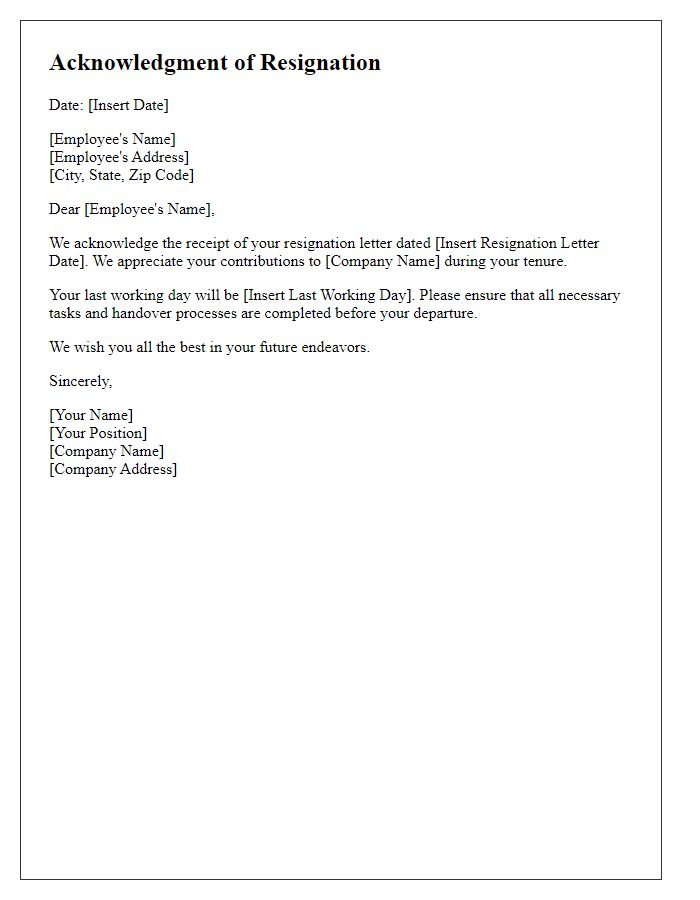
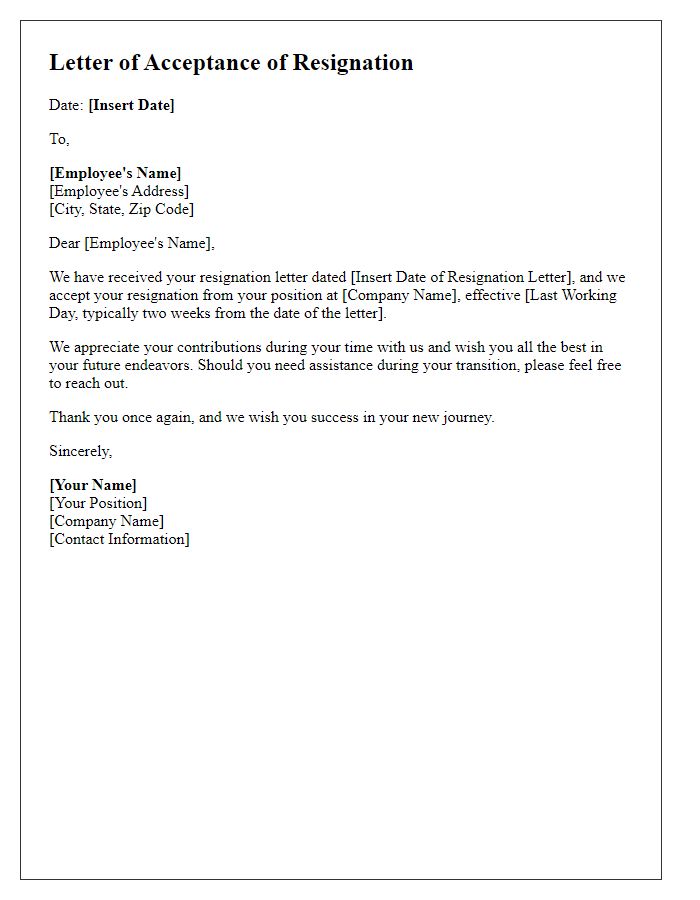
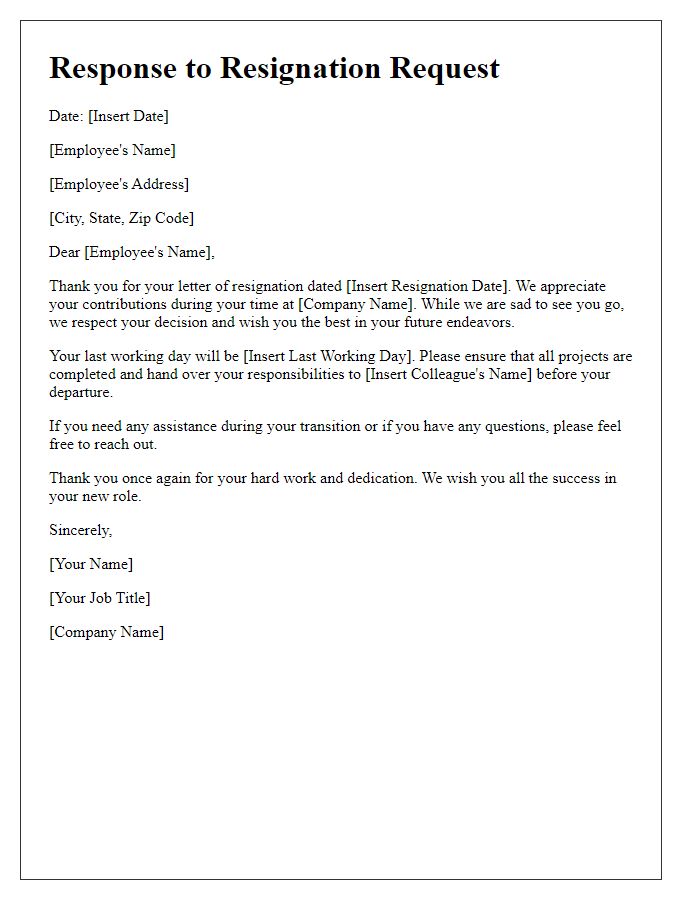
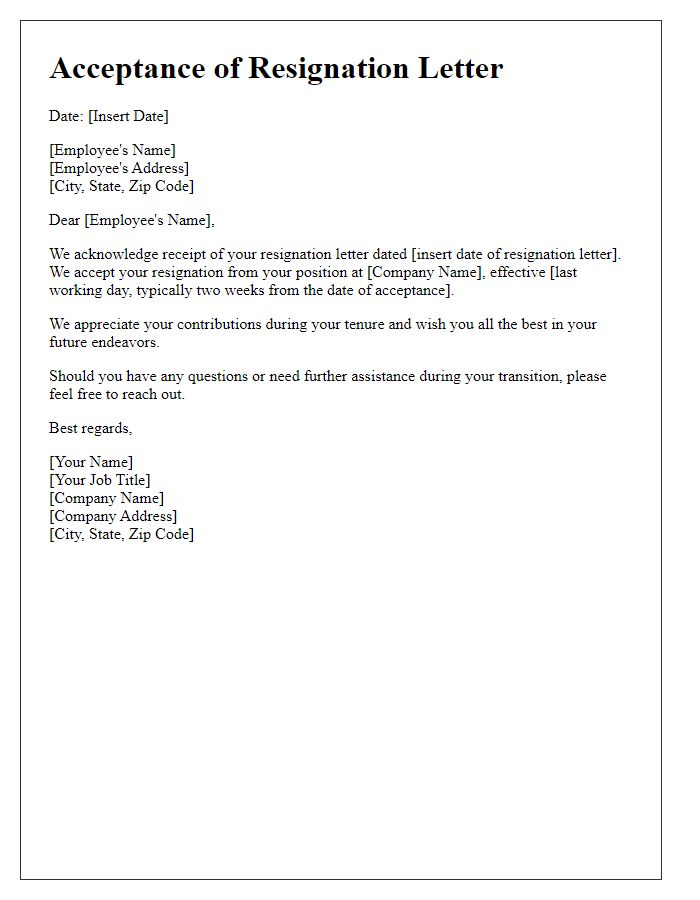
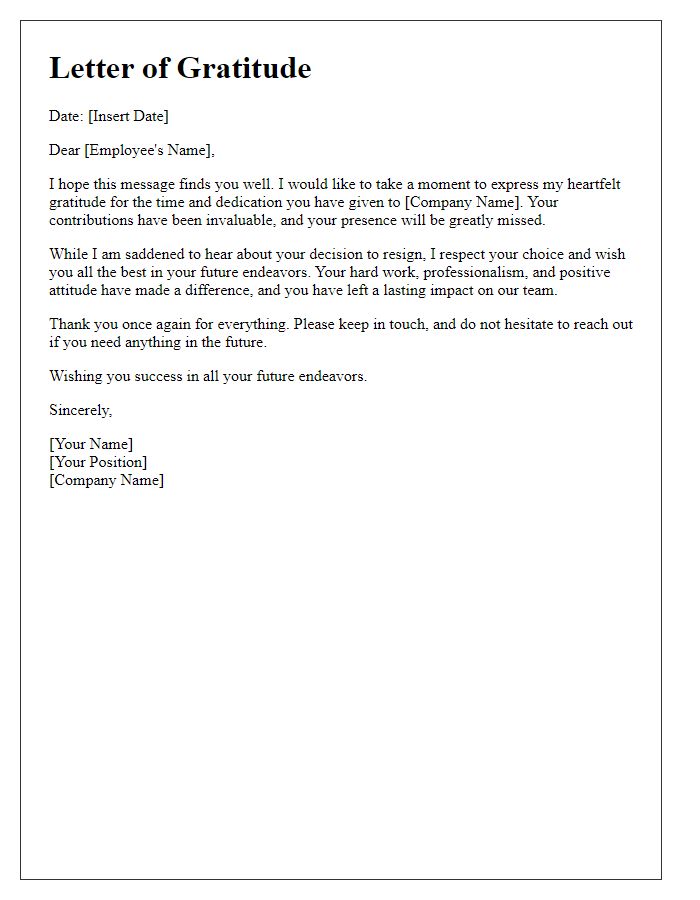
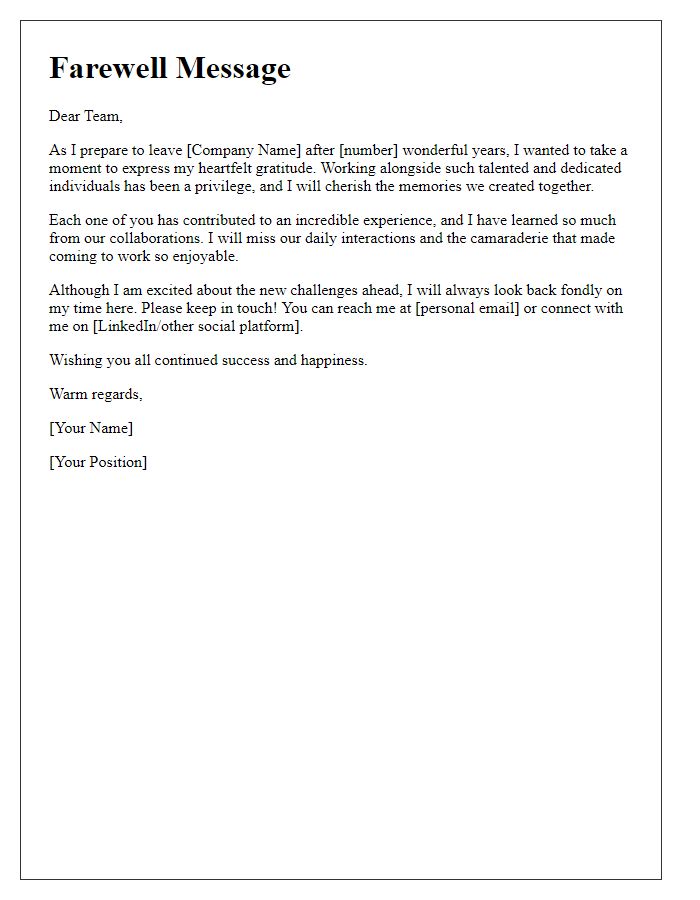
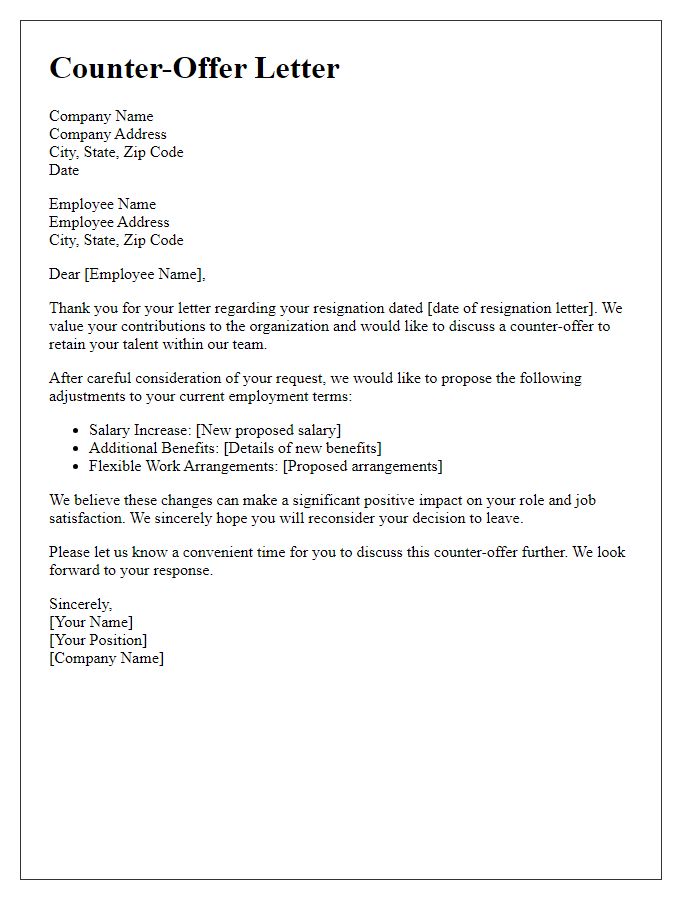
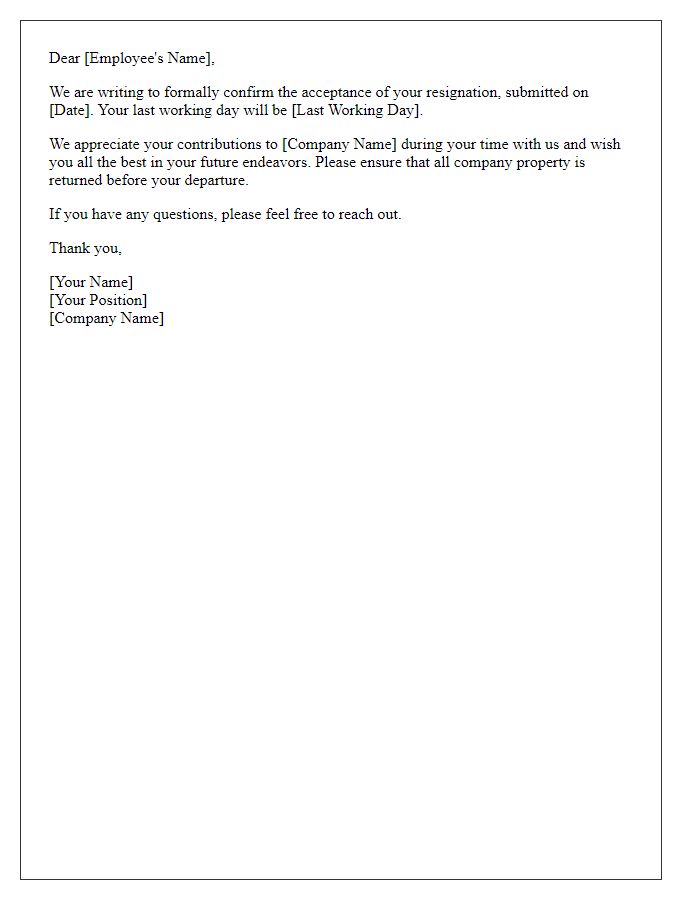
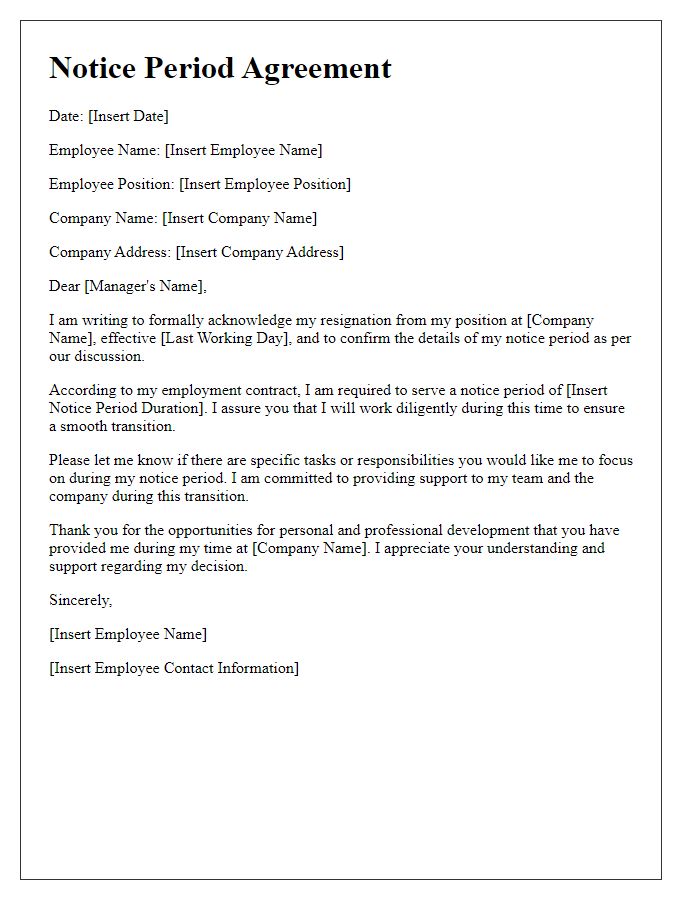
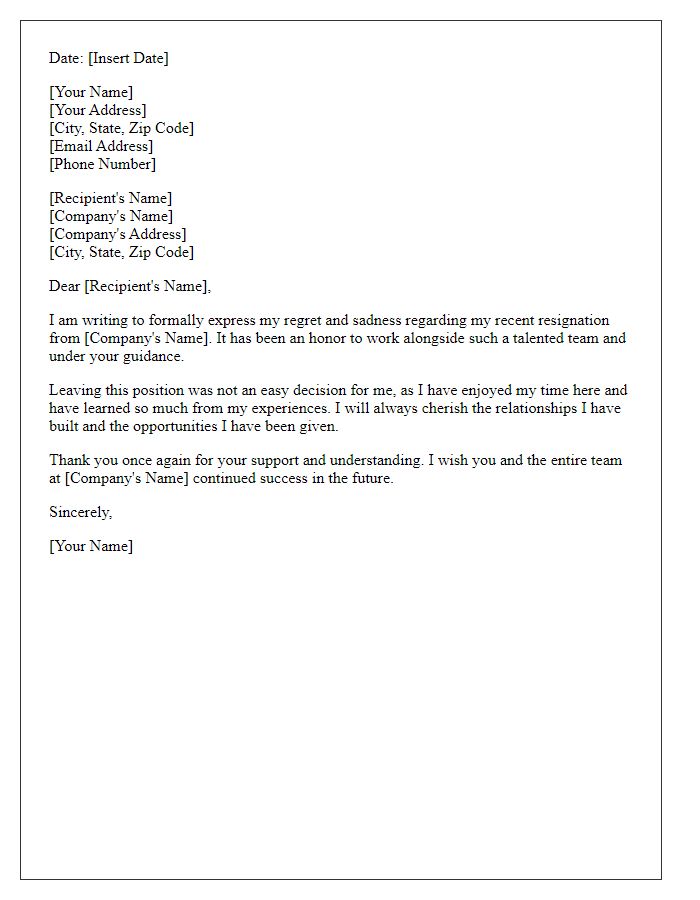





Comments